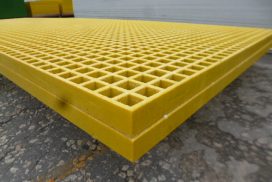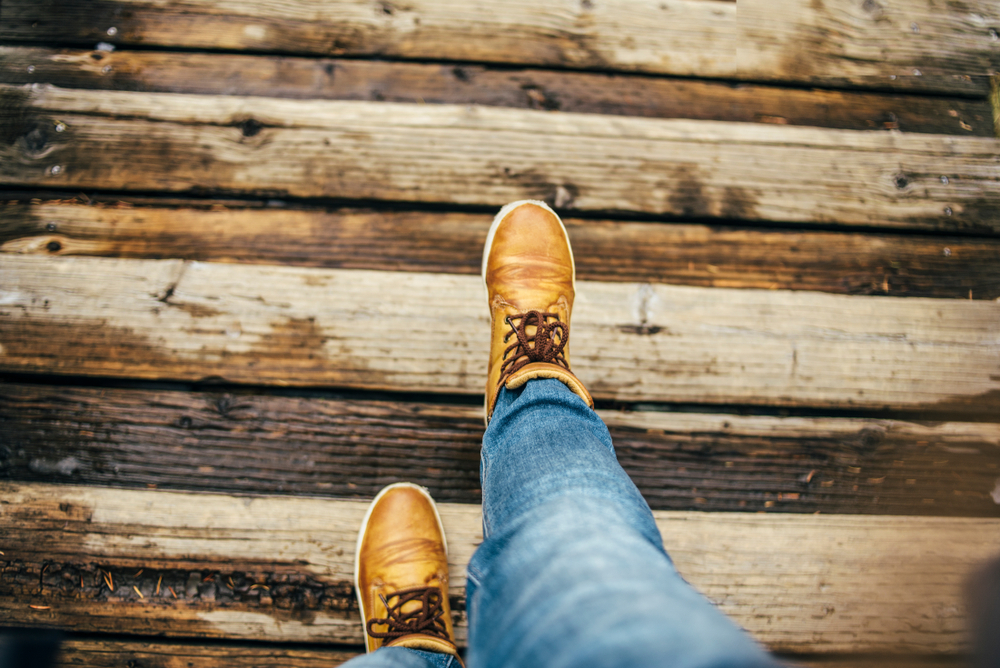More Insight into GRP Composites and Anti-Slip products
Some of your questions answered on our anti-slip safety access flooring resources and structural GRP Products.
GRP Resources
Discover everything you need to know about GRP, its uses and properties.
What is GRP? - Glass Reinforced Plastic
Unsure what GRP is ? Discover what GRP is used for and why at GripClad, we use GRP for our gratings, handrails, fencing and Stair Treads covers and other safety products.
Common Uses for GRP Gratings
Discover some of the more common uses for GRP gratings.
GRP Clips & Fixings
Here you’ll find examples of our GRP grating clips and joinings.
GRP FAQ
The use of GRP is growing. As more and more industries discover the desirable properties of this material, its use of expanding. Get your questions about GRP answered right here.
Properties of GRP vs Steel
Ever felt confused about the difference between GRP and steel? Not sure what's the best choice for you? Find out about the properties and benefits of GRP.
GRP Advantages and Disadvantages
If you're unsure whether GRP is right for your application, discover more about the advantages and disadvantages of using GRP here.

GRP Grating Uses
GRP continues to replace conventional materials - major asset-owners are fostering innovation and steadily using it for more applications Due to the increasing number of uses for GRP gratings, we offer a range of different sizes and resin systems to suit various environments, including:
Footbridges
Non-slip Stair Grating
Overflow Grates
Anti-slip Decking
Work Platforms
Cooling Towers
Wind Farm Platforms
Bunded Flooring
Service Riser Flooring
Custom GRP Fabrication
Removeable Grid Flooring
Drain Covers
Grid Walkways
Drainage Channel Grates
Signal Gantries
Rooftop Catwalks
Inspection & Catchpit Covers
Service Walkways
GRIPCLAD® GRP grating, anti-slip and flooring systems comply with relevant UK and European standards.
Our GRP products are fire retardant to ASTM E84 and we also adhere to BE EN ISO 14122 ‘permanent means of access to industrial equipment’ and BS4592 ‘industrial flooring, walkways and stair treads’ regulations.
GRIPCLAD® GRP gratings are all manufactured to BS EN ISO 9001:2000 standards.

GRP Pultruded Structural Profiles
We stock a wide range of GRP profiles. Our technically advanced GRP formulation delivers excellent corrosion resistance and durability to provide a cost effective, alternative to steel, aluminium and timber. Suitable for walkways, platforms, ladders and handrails, lightweight GRP is easy to install and does not require heavy lifting equipment.
Advancement in Isophthalic Resin based Profiles
Manufactured from glass reinforced isophthalic polyester resin with E glass fibre, a continuous strand mat and a polyester surface veil as the surface layer.
GRP box
GRP angles
GRP I beams
GRP wide flange H beams
GRP ladder rung
GRP uni-strut
GRP flat strips
GRP channel

Slip Resistance Standards & testing
Understanding slip testing and slip risk data.
How to Test slippery floors
To make sure floor surfaces designed and created do not put people’s safety at risk, surfaces need to be tested.
Find out more about slip resistance testing.
Tactile Paving Regulations
Tactile paving regulations define the shape, size and location of safety flooring for the visually impaired. Find out more about tactile paving standards.
Product Resistance Data
Our anti-slip products are chemical and fire resistant. This makes them ideal anti-slip solutions for industrial works and chemical facilities. Find out more about the superior fire and chemical resistance of GRP.
The Truth about Slip and Fall Accidents
Slip and fall accidents are one of the most common causes of injury, which can result in broken bones in just a few seconds. Slip and Fall Hazards can put you on your back and out of action. While it may be easy to categorize injuries as "accidents", the truth is that many of them could be prevented if the property owner took more care. Very often we receive requests to solve a slip hazard problem but it takes a victim to have a nasty slip accident beforehand, that is a fact. They wait until someone has a slip or fall accident to confirm that a hazard actually exists! The potential for a slip, trip, or fall can happen almost anywhere and at anytime.
A simple act of negligence by a property owner can force you to endure painful and costly medical treatment and weeks or months off work.
Dangerous conditions can exist outdoors, indoors, and at any time of the year, but here are some of the common hazards
FLOOR MATS
Businesses will often lay anti-slip floor mats by doors and in well-trafficked areas but they present their own hazards. An overused mat will eventually curl or peel at the edges, which creates a potential trip accident. Mats that have been laid to soak up water or melted snow may become too saturated, posing a slipping hazard. Mats incorrectly laid may also have wrinkles in them or shift out of position as people walk over them, increasing the odds of someone catching the front of their foot as they enter.
EMPLOYEES
Companies rely on staff to keep their businesses running smoothly, and that involves a flurry of activity and many different moving parts. Customers are expected to navigate restaurants with swift waiting staff and supermarkets where employees are constantly restocking items etc. The chances of a fall or slip increase even further if a business remains open to the public during a renovation or refurbishment.
CABLES & CORDS
Extension cords, ropes, power cables, and other lines run across walking areas are essentially tripwires to passer-by. If it necessary to run cords across walking surface, they should be taped down, covered with mats, and have a clear signage warning of the danger.
WATER
Slips on spilled water or ice are leading causes of fall injuries, and there are nearly limitless ways water on a surface can lead to a fall. Outdoors, recessed pavement and potholes can collect puddles, downspouts can cause flooding across lawns and into businesses, and metal and wooden steps become slick after a few moments of rainfall. Indoors, customers can leave puddles from their jackets and umbrellas on rainy days, while pipes in restrooms and eating areas can cause puddles year-round.
Loss of traction. Water isn’t the only substance that poses a slip hazard to pedestrians. Spilled liquids, especially ones containing fats (like milk) or grease (like engine oil), can cause a faster slip and harder fall. Other debris, such as fine dirt or sawdust can cause a sudden loss of traction, especially on a polished concrete or high-gloss wooden floor.
STAIRS
Stairs pose a particular danger for falls, since a tumble down a flight of stairs or over a railing can result in more serious injuries than a fall on one level. Steps must be constructed and evenly planed to prevent tripping, be free of clutter or debris, and should be in good condition with adequate tread. In addition, stairways used by the public should always have strong handrails and proper lighting.
UNEVEN PATHWAYS/WALKWAYS
Pavements, Car Parks, and Walkways should be clear, even, and dry. Uneven pavement, broken concrete, changing grades, high kerbs, potholes, tree roots, and even landscape edging near walkways can cause trips, especially if these areas are not well-lit. If there are objects blocking a walking path, pedestrians may suffer falls or other injuries by attempting to walk around them.

